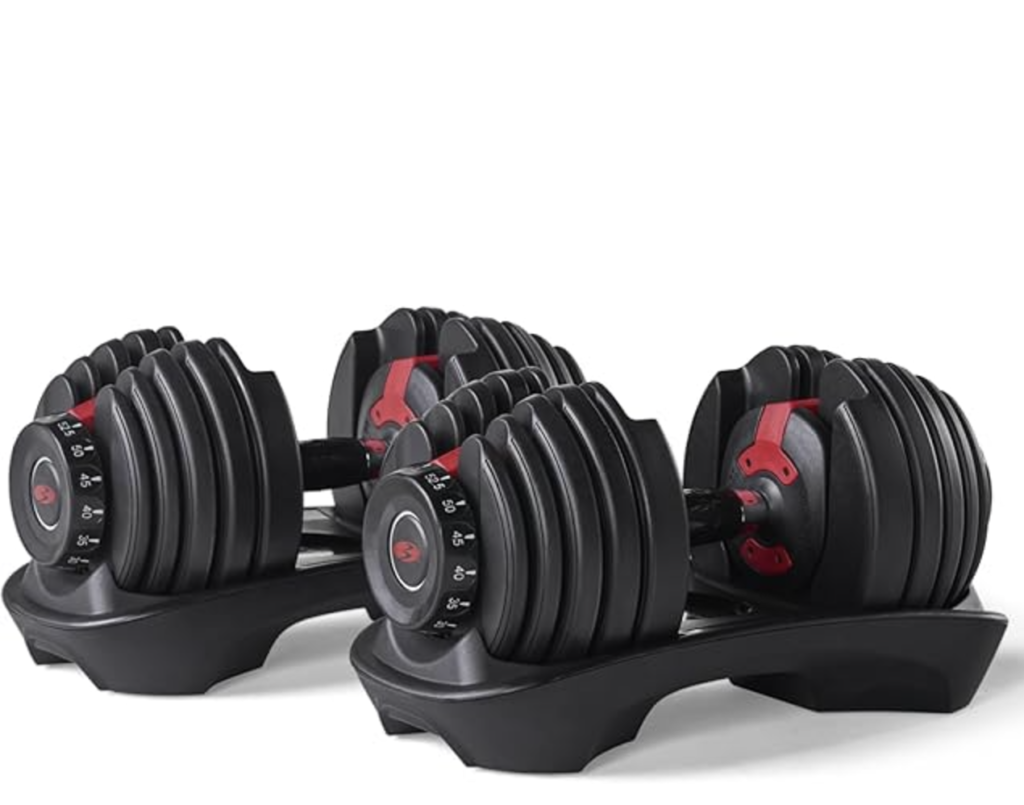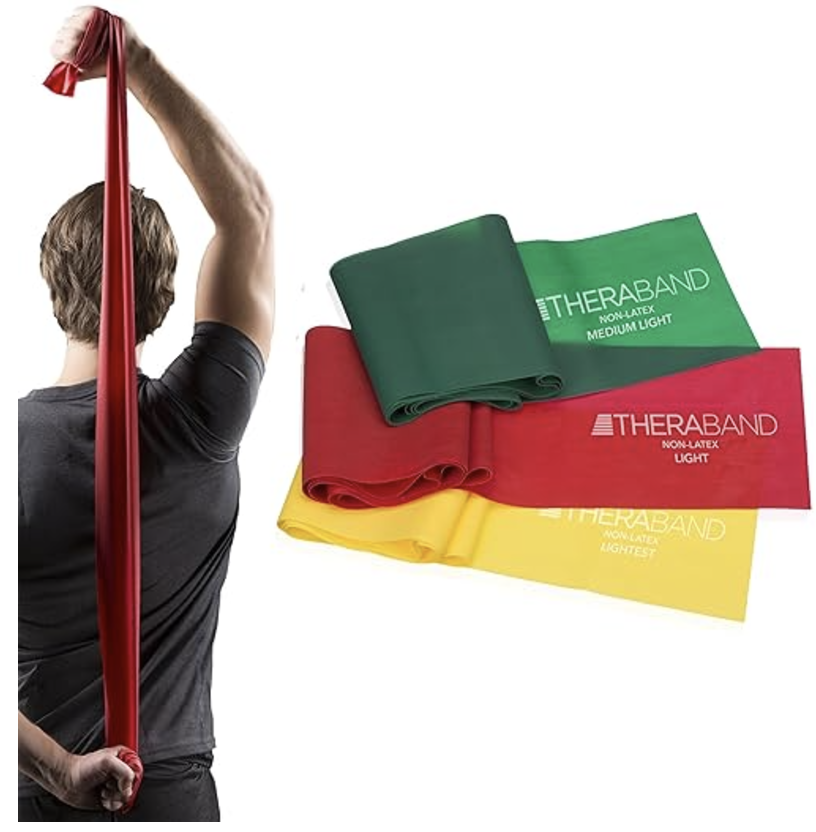As home fitness gains popularity, dumbbells and resistance bands have become two of the most sought-after pieces of equipment. However, many people struggle with a common question: which one is better suited for my workout goals?
This article provides an in-depth comparison of dumbbells and resistance bands in terms of features, pros and cons, suitable scenarios, and workout effectiveness, helping you make an informed decision.
What Are Dumbbells and Resistance Bands?
1. Dumbbells
Dumbbells are traditional free weights made of metal or other materials, available in fixed or adjustable weights. They primarily provide resistance through gravity and are widely used for strength training.
2. Resistance Bands
Resistance bands are elastic fitness tools that provide resistance when stretched. They come in various levels of tension, typically categorized as light, medium, and heavy.
Pros and Cons of Dumbbells
Pros
1. Wide Range of Weights
• Dumbbells come in various weight options, from 1kg to over 50kg, catering to different training levels and goals.
2. Versatility
• Dumbbells can be used for full-body workouts, including strength training, muscle building, and endurance exercises.
3. Effective Muscle Stimulation
• By leveraging gravity and free weights, dumbbells offer deeper muscle engagement, ideal for building muscle mass.
4. Symmetry and Balance
• Using dumbbells for bilateral movements helps train both sides of the body evenly.
Cons
1. Space Requirements
• Fixed-weight dumbbells require multiple sets, which can take up significant space.
2. Higher Cost
• High-quality or adjustable dumbbells can be expensive.
3. Limited for Dynamic Exercises
• Dumbbells are better suited for static strength training and less ideal for dynamic or functional movements.
Pros and Cons of Resistance Bands
Pros
1. Lightweight and Portable
• Resistance bands are compact and easy to carry, making them ideal for home use and travel.
2. Multi-Angle Training
• Resistance bands provide resistance at various angles, making them suitable for flexibility and joint stability exercises.
3. Adjustable Intensity
• Training difficulty can be easily modified by adjusting the band’s tension and length.
4. Affordable
• Compared to dumbbells, resistance bands are more budget-friendly.
Cons
1. Limited Muscle Stimulation
• Resistance bands are less effective than dumbbells for training large muscle groups, such as the chest and back.
2. Durability Issues
• Over time, resistance bands may lose elasticity or even break, requiring replacement.
3. Challenging to Control Tension
• During high-intensity training, maintaining consistent tension with resistance bands can be difficult.
Dumbbells vs Resistance Bands: Best Use Cases
1. Strength Training
• Dumbbells: Ideal for building strength and muscle mass through exercises like squats, bench presses, and rows.
• Resistance Bands: Suitable for light strength training, especially for beginners or those in rehabilitation.
2. Cardiovascular Endurance
• Dumbbells: Heavier weights make them less suitable for dynamic cardio-based workouts.
• Resistance Bands: Perfect for incorporating into high-intensity interval training (HIIT) workouts.
3. Dynamic and Flexibility Training
• Dumbbells: Limited flexibility for dynamic movements.
• Resistance Bands: Provide resistance at multiple angles, making them ideal for improving flexibility and overall functional performance.
4. Rehabilitation Training
• Dumbbells: Often too heavy for rehabilitation or recovery exercises.
• Resistance Bands: Lightweight and controllable tension make them ideal for joint and muscle recovery.
5. Space Requirements
• Dumbbells: Require more space for storage, especially fixed-weight sets. Adjustable dumbbells save space but still take up some room.
• Resistance Bands: Extremely compact and easy to store, perfect for small spaces or traveling.
How to Choose the Right Equipment for Your Goals
1. For Muscle Building and Strength Goals: Choose Dumbbells
• Recommended Exercises: Bench presses, squats, shoulder presses, and rows.
• Recommended Product: Adjustable dumbbells like Bowflex SelectTech 552 Adjustable Dumbbells.
👉 Buy Bowflex Adjustable Dumbbells on Amazon

2. For Flexibility and Rehabilitation Goals: Choose Resistance Bands
• Recommended Exercises: Standing stretches, lateral band walks, shoulder external rotations.
• Recommended Product: Resistance band sets like TheraBand Resistance Bands Set.
👉 Buy TheraBand Resistance Bands Set on Amazon

3. For Comprehensive Training Goals: Use Both
• Combining dumbbells and resistance bands allows you to achieve a variety of fitness goals, including strength, flexibility, and cardiovascular endurance.
Sample Training Plans Using Dumbbells and Resistance Bands
1. Full-Body Strength Training (Dumbbells)
• Exercises:
• Dumbbell squats (3 sets × 12 reps)
• Dumbbell rows (3 sets × 10 reps)
• Dumbbell shoulder presses (3 sets × 10 reps)
• Dumbbell lunges (3 sets × 10 reps/leg)
2. Flexibility and Functional Training (Resistance Bands)
• Exercises:
• Standing shoulder stretches (3 sets × 15 reps)
• Lateral band walks (3 sets × 12 steps/side)
• Seated back stretches (3 sets × 10 reps)
3. Comprehensive Training Plan (Dumbbells + Resistance Bands)
• Schedule:
• Monday, Wednesday, Friday: Dumbbell strength training.
• Tuesday, Thursday, Saturday: Resistance band flexibility training.
Conclusion: How to Choose the Right Fitness Equipment?
1. If your goal is building muscle, improving strength, or targeting large muscle groups, dumbbells are the better option.
2. If your goal is enhancing flexibility, rehabilitation, or needing portable equipment, resistance bands are more suitable.
3. For those with diverse fitness goals, combining dumbbells and resistance bands provides the most comprehensive approach.
Regardless of your choice, the key is to follow a scientifically designed workout plan and adjust it according to your needs. With the right tools and methods, you can achieve your fitness goals efficiently, even at home!




















